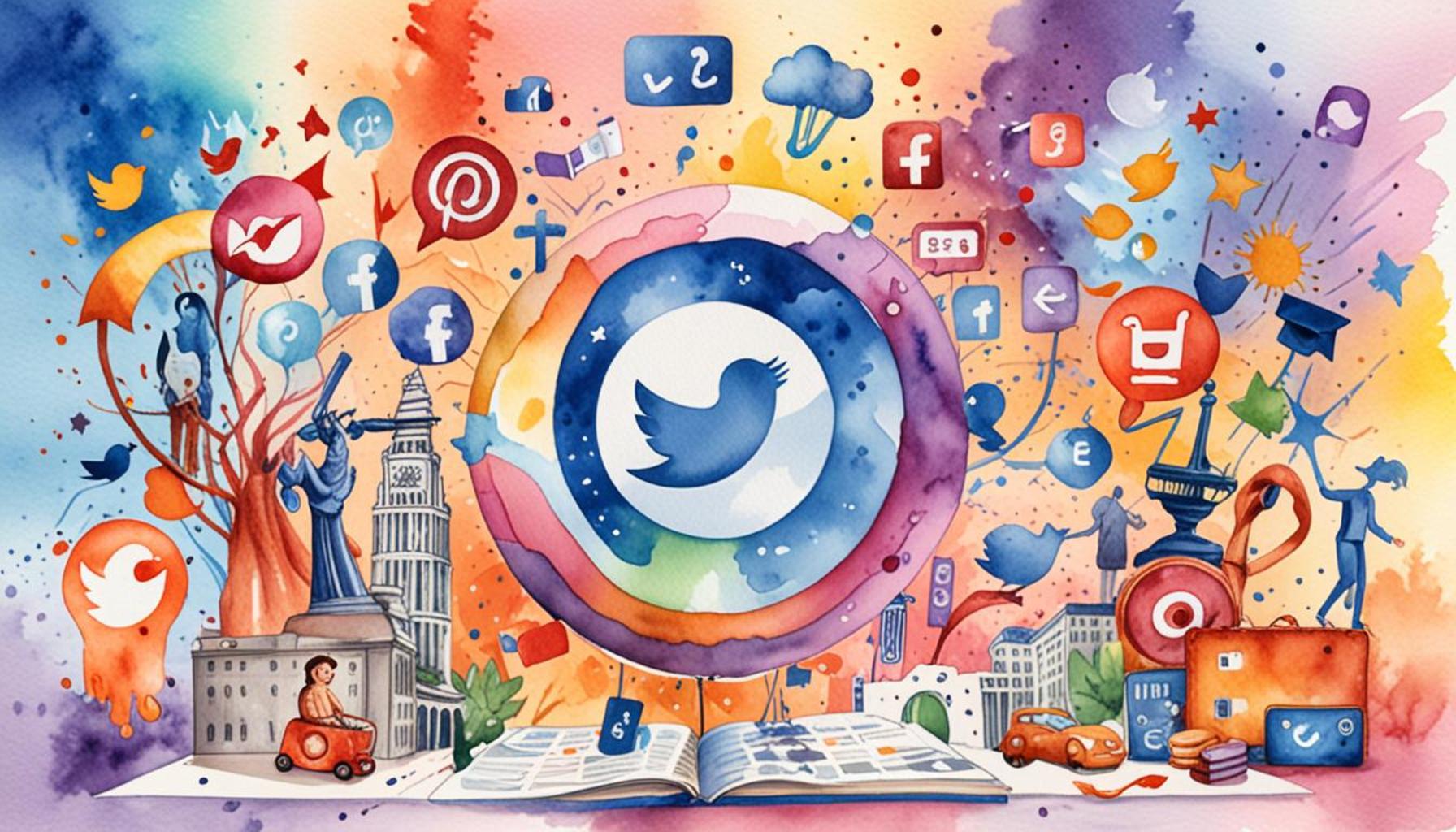The Impact of Social Media on Awareness of Government Benefits

Understanding the Influence of Social Media
The rapid rise of social media has fundamentally changed how information is disseminated, especially concerning essential resources like government benefits. This transformation has led to a new era where awareness and accessibility of such benefits are shaped significantly by social media platforms. To understand the full scope of this shift, it’s imperative to examine how these platforms serve as crucial facilitators for the sharing and absorption of information.
Key Factors Influencing Awareness
- Instant Access to Information: Social media enables users to access information about various government assistance programs quickly. For instance, during the COVID-19 pandemic, platforms like Twitter and Instagram were inundated with updates about stimulus checks and emergency unemployment benefits. This rapid circulation of information ensured that individuals could find essential details without navigating cumbersome government websites.
- Community Engagement: Social media thrives on community interaction, which is beneficial for enhancing understanding of available government programs. Facebook groups dedicated to financial assistance or specific health benefits allow users to share experiences, tips, and advice, fostering a sense of solidarity among those seeking help. This collaborative environment encourages more individuals to explore options they might otherwise have overlooked.
- Targeted Messaging: Social media platforms employ sophisticated algorithms that allow for targeted messaging. This means that content about specific government benefits can reach demographics more likely to need it. For example, ads promoting low-income housing assistance may be shown primarily to users within lower socioeconomic brackets, allowing for personalized outreach that broadens awareness effectively.
In the United States, major platforms like Facebook, Twitter, and Instagram are increasingly vital in raising awareness regarding governmental resources. They function not only as channels for official announcements from government agencies but also as spaces where individuals share personal experiences and invaluable insights. This communal sharing often results in a heightened interest in government programs, as anecdotes can serve as powerful motivators for individuals contemplating whether to seek assistance.
A Growing Awareness
Digging deeper into these themes reveals that the impact of social media on awareness of government benefits extends beyond mere information sharing. The interaction between information availability and user engagement significantly shapes how citizens navigate and utilize government resources. This digital interplay has created a more informed public, which is essential, particularly in times of crisis or economic uncertainty.
As we move forward, it is crucial to continue examining the implications of social media on public understanding of government benefits. The captivating intersection of technology and public policy not only informs us but also challenges us to consider how these dynamics can influence social equity and accessibility. With this in mind, we encourage readers to further explore how digital platforms can contribute to their empowerment and access to vital resources.
YOU MAY ALSO LIKE: Read read another article
Amplifying Voices and Information
Social media has emerged as a dominant force in shaping public discourse, particularly concerning government benefits. Unlike traditional channels of communication, where information flows from a centralized source to the public, social media democratizes the sharing of information. This has resulted in a landscape where individuals can not only receive updates but also contribute to the conversation about available government assistance. The ripple effects of this interactive environment foster a greater sense of community while also making critical resources more visible to those in need.
Real-Time Updates and Transparency
The ability to disseminate information in real-time is one of the most significant advantages of social media platforms. During moments of national crisis, such as natural disasters or economic downturns, platforms like Twitter have become go-to resources for instant updates regarding government programs. For instance, during the economic fallout from the COVID-19 pandemic, Twitter hashtags such as #StimulusCheck and #UnemploymentHelp trended as people shared firsthand information about eligibility criteria and application processes. Such immediacy not only keeps citizens informed but also empowers them to act swiftly in accessing necessary resources.
The Role of Influencers and Advocacy Groups
In this age of information, social media influencers and advocacy groups play crucial roles in bridging the gap between government resources and the public’s understanding of them. These entities often leverage their platforms to circulate information about various benefits, thereby enhancing their reach. Additionally, they can provide context to government offerings, translating complex policies into more digestible content for everyday users. For instance, non-profit organizations may run campaigns on Instagram that succinctly explain welfare programs and eligibility, encouraging users to seek assistance that they might have previously overlooked.
Barriers to Accessing Information
- Digital Divide: Despite the advantages of social media in raising awareness, challenges persist. The digital divide—a gap between those who have easy access to digital technology and those who do not—can limit the effectiveness of these platforms. Low-income populations or individuals without reliable internet access may miss out on crucial information regarding benefits.
- Information Overload: The vast amount of information circulated can also lead to confusion. Users may struggle to discern credible sources from misinformation, which can deter them from pursuing available benefits altogether.
- Privacy Concerns: Another barrier is the hesitancy surrounding sharing personal information online. Citizens may find it challenging to engage openly about their needs on public platforms, limiting the community engagement aspect of seeking assistance.
As we navigate the complexities of social media’s impact on public awareness of government benefits, it is essential to recognize both its strengths and limitations. The interplay of information accessibility and community engagement contributes significantly to how individuals discover and utilize essential resources. This awareness can ultimately lead to better-informed citizens, who are more equipped to handle their needs in face of bureaucratic challenges.
| Category | Details |
|---|---|
| Increased Outreach | Social media platforms serve as powerful tools to reach vast audiences, ensuring that information about government benefits reaches a broader demographic. |
| Engagement Opportunities | Utilizing platforms like Facebook and Twitter creates opportunities for direct engagement between governments and citizens, fostering a two-way communication channel. |
| Real-Time Information | Instant updates on programs and eligibility criteria can be disseminated swiftly, keeping citizens informed of changes that affect their access to benefits. |
| Demographic Insights | Data gathered from social media interactions can help tailor government programs to suit the needs of specific populations, increasing both relevance and utilization. |
The impact of social media in this context showcases not just the spread of information but also the potential for engaging with communities in ways that traditional media cannot. The shift towards digital communication has emphasized the need for governmental entities to adapt and reconsider strategies aimed at enhancing awareness and accessibility of benefits. By leveraging social media, governments can significantly enhance the visibility of benefit programs, ensuring that no eligible citizen is left uninformed. This evolution in communication strategies presents an exciting opportunity for increased public participation and awareness regarding available resources.
CHECK OUT: Click here to explore more
The Push for Inclusivity and Equity
In the constantly evolving landscape of social media, one pivotal aspect that has gained attention is the push for inclusivity and equity in government benefits awareness. Various social media initiatives aim to create tailored content targeted at underrepresented groups, including minorities, disabled individuals, and single-parent households. By leveraging platforms like Facebook, Instagram, and TikTok, organizations are not only widening the reach of their messages but also ensuring that these communities feel seen and acknowledged. For example, campaigns that utilize testimonies from real beneficiaries can humanize the often abstract concept of government assistance, creating a more relatable narrative that resonates with those who may have previously been disengaged.
Localized Messaging and Community Engagement
One of the noteworthy trends in social media awareness campaigns is the effort to provide localized messaging. Programs tailored to specific states or cities can benefit from user-generated content that showcases local success stories. For instance, state agencies may partner with community leaders on podcasts or virtual town halls aired through social media platforms, where they discuss available programs, upcoming changes, and share personal anecdotes on how benefits have impacted lives. Such localized efforts encourage community engagement and foster trust, leading to increased participation among those who might remain skeptical about the federal government.
Innovative Uses of Multimedia Content
The multimedia capabilities inherent in social media create opportunities for innovative content that engages users in unique ways. Videos, infographics, and interactive quizzes can make the process of learning about government benefits both informative and entertaining. Take, for example, TikTok videos breaking down the complex terminology of Medicaid or food assistance programs into short, engaging snippets. These often go viral, reaching not only those directly seeking assistance but also their friends and family, thereby amplifying the message exponentially. According to a study by the Pew Research Center, nearly 70% of young Americans report that they learn about health resources, including government benefits, through social media. This statistic highlights the platform’s critical role in educating a tech-savvy generation.
Regulatory Challenges and Misinformation
- Content Moderation: While social media serves as a powerful conduit for awareness, the lack of rigorous content moderation can lead to the spread of misinformation. The very platforms that aim to educate are sometimes marred by misleading claims regarding government programs. For instance, rumors surrounding the eligibility for the Supplemental Nutrition Assistance Program (SNAP) can deter individuals from applying, as they may believe false narratives about age or income requirements.
- Algorithmic Bias: Algorithms that determine what content users see can inadvertently propagate inequities in awareness. If certain demographics are not adequately represented in influencer marketing or within the content created by advocacy groups, key segments of the population may not receive essential information about available benefits.
- Crisis Communication Gaps: In crises, the urgency of information dissemination becomes critical. However, government agencies often struggle to navigate social media effectively. For instance, while new emergency benefits programs during the pandemic were announced via mainstream media, the lack of clarity in social media posts left many users confused about how to proceed. This gap points to a clear need for improved crisis communication strategies that align with social media’s fast-paced nature.
The dual nature of social media as both a tool for awareness and a source of confusion demonstrates the need for a balanced approach. As the dialogue about governmental assistance evolves in the digital sphere, it becomes increasingly essential to bridge the gap between information and understanding, ensuring that all citizens have equitable access to these vital resources.
SEE ALSO: Click here to read another article
Conclusion: Navigating the Social Media Landscape for Government Benefits Awareness
The impact of social media on awareness of government benefits is both significant and nuanced. This digital age has redefined how individuals access information, introducing a spectrum of opportunities and challenges that shape public understanding. As detailed throughout this article, effective social media campaigns can elevate awareness, particularly among underserved communities, by using tailored messaging and innovative multimedia content. Engaging platforms like TikTok and Instagram allow for creative storytelling that is more relatable, thus fostering a sense of belonging among users who may feel marginalized by traditional channels.
However, the landscape is not without its pitfalls. The significance of content moderation and the risk of misinformation cannot be understated. False narratives can easily dissuade eligible individuals from seeking benefits they are entitled to, demonstrating the critical need for accurate and timely communication. Furthermore, algorithmic biases can create gaps in information dissemination, underscoring the necessity for more equitable content representation across all demographics.
As we move forward, it is imperative that policymakers, advocacy groups, and social media platforms unite to create effective strategies that ensure all citizens have equitable access to government assistance resources. The interplay between social media and government benefits awareness offers fertile ground for innovation and improvement. Therefore, equipping individuals with reliable information and fostering a more inclusive atmosphere will undeniably contribute to elevating societal knowledge and engagement in essential programs. It is a journey worth undertaking for the sake of informed citizenship and community empowerment.


